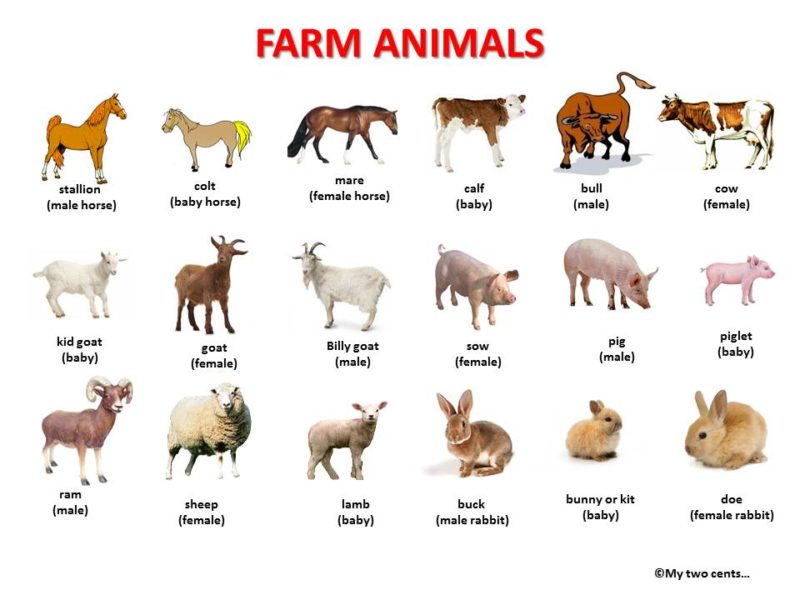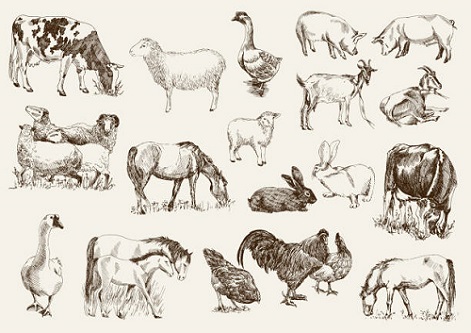What is Livestock?
Livestock is generally defined as the animals kept or raised on a farm to earn income, produce labor and other commodities. Livestock (also known as farm animals) is also a general term used for animals bred or kept for meat, products, labor or income.
Examples of livestock include chicken, turkey, duck, goose, quail, cattle, goat, sheep, pig, horse, donkey, ox, rabbit, buffalo, yak, llama, alpaca and camel.
Some of the products and by-products obtained from livestock include:
- Meat
- Hide and skin (leather)
- Fur
- Wool
- Eggs
- Milk
- Hormones
- Blood
- Manure
- Bone
The products or usefulness of some major livestock are listed below:
- Cow: milk and meat (beef)
- Sheep: wool, cheese, milk and meat (mutton)
- Pig: meat (pork) and lard
- Goat: milk and meat (chevon)
- Poultry: eggs and meat
- Horse: beast of burden, transportation
- Donkey: beast of burden, transportation
What are Domestic Animals?
Domestic animals are the animals that live with humans – in the house, in the apartment, in the garden or farm. Domestic animals are kept either for companionship, food, transportation or labour.
Examples of domestic animals include dog, cat, guinea pig, hamster, chicken, turkey, duck, geese, quail, cattle, goat, sheep, guinea fowl, parrot, pigeon, fish, pig, horse, donkey, ox, rabbit, buffalo, yak, llama, alpaca and camel.
Differences between Livestock and Domestic Animals
All livestock are domestic animals but not all domestic animals are livestock. Domestic animals mostly live in the homes and are kept primarily for companionship while livestock is kept mainly on the farm to earn income or produce food.


